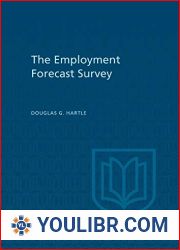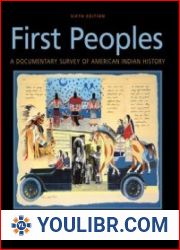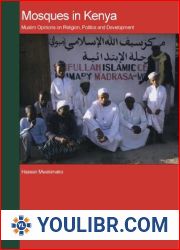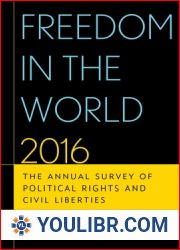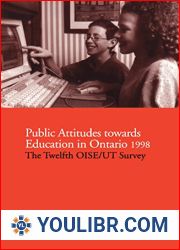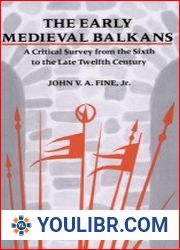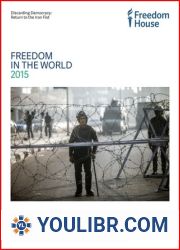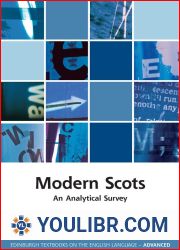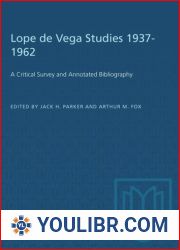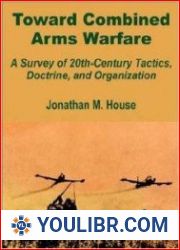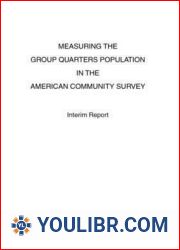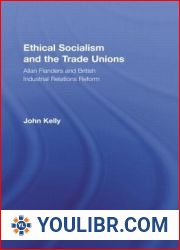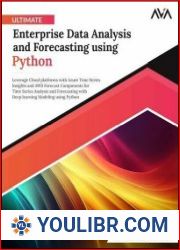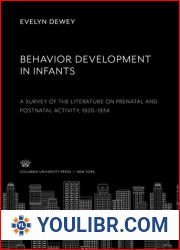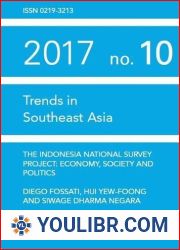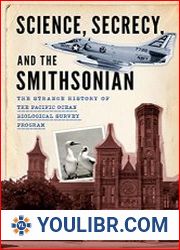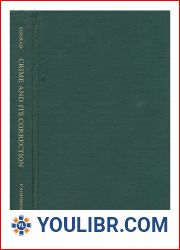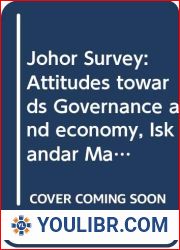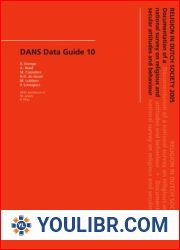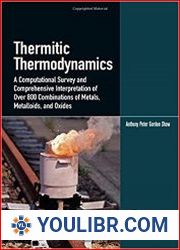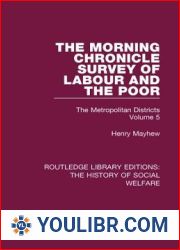
BOOKS - The Employment Forecast Survey

The Employment Forecast Survey
Author: Douglas G Hartle
Year: December 15, 1962
Format: PDF
File size: PDF 9.0 MB
Language: English

Year: December 15, 1962
Format: PDF
File size: PDF 9.0 MB
Language: English

The Employment Forecast Survey: A Comprehensive Analysis of Future Employment Trends Introduction: In this monograph, Professor Hartle presents the findings of a series of investigations conducted under the auspices of the Canadian Department of Labour, aimed at understanding future employment trends in industry. The Employment Forecast Survey (EFS) was initiated in 1946 to gather information about the future levels and trends of employment in various industries. This study is significant as it provides a comprehensive analysis of the EFS, comparing it with similar surveys conducted in the United States, the United Kingdom, and Germany. Background: The EFS was designed to obtain predictions from individual establishments regarding their future employment needs. The survey was carried out in three phases, with Professor William C. Hood and Professor Hartle assisting in the first phase in 1953. In the second phase, Professor Hartle analyzed the predictions provided by individual establishments and evaluated improvements that could be made in the reliability of both the employer's forecasts and the Department's conclusions. The final phase focused on an in-depth analysis of the forecasts provided by individual establishments. Methodology: The EFS employed a multi-faceted approach to gather data, including questionnaires, interviews, and statistical modeling. The survey targeted a wide range of industries, including manufacturing, construction, transportation, and service sectors. The questions addressed various aspects of employment, such as job openings, layoffs, and skill requirements.
The Employment Forecast Survey: A Comprehensive Analysis of Future Employment Trends Введение: В этой монографии профессор Хартл представляет результаты серии исследований, проведенных под эгидой Министерства труда Канады, направленных на понимание будущих тенденций занятости в промышленности. Исследование прогноза занятости (EFS) было начато в 1946 году для сбора информации о будущих уровнях и тенденциях занятости в различных отраслях. Это исследование является важным, поскольку оно обеспечивает всесторонний анализ EFS, сравнивая его с аналогичными опросами, проведенными в Соединенных Штатах, Великобритании и Германии. Справочная информация: EFS была разработана для получения прогнозов от отдельных учреждений относительно их будущих потребностей в занятости. Обследование проводилось в три этапа, при этом профессор Уильям К. Худ и профессор Хартл помогали на первом этапе в 1953 году. На втором этапе профессор Хартл проанализировал прогнозы, предоставленные отдельными учреждениями, и оценил улучшения, которые можно было бы сделать в достоверности как прогнозов работодателя, так и выводов Департамента. Заключительная фаза была сосредоточена на углубленном анализе прогнозов, предоставленных отдельными учреждениями. Методология: EFS использовала многогранный подход для сбора данных, включая вопросники, интервью и статистическое моделирование. Опрос был посвящен широкому кругу отраслей, включая обрабатывающую промышленность, строительство, транспорт и сферу услуг. Вопросы касались различных аспектов трудоустройства, таких как открытие рабочих мест, увольнения и требования к квалификации.
The Employment Forecast Survey : A Comprehensive Analysis of Future Employment Trends Introduction : Dans cette monographie, le professeur Hartle présente les résultats d'une série d'études menées sous les auspices du ministère du Travail du Canada afin de comprendre les tendances futures de l'emploi dans l'industrie. L'Étude sur les prévisions de l'emploi (EFS) a été lancée en 1946 pour recueillir des informations sur les niveaux et tendances futurs de l'emploi dans les différentes industries. Cette étude est importante car elle fournit une analyse complète de l'EFS en la comparant à des enquêtes similaires menées aux États-Unis, au Royaume-Uni et en Allemagne. Contexte : L'EFS a été conçu pour obtenir des prévisions des institutions individuelles sur leurs besoins futurs en matière d'emploi. L'enquête a été menée en trois étapes, avec le professeur William C. Hood et le professeur Hartle dans la première phase en 1953. Dans un deuxième temps, le professeur Hartle a analysé les prévisions fournies par les différents organismes et a évalué les améliorations qui pourraient être apportées à la crédibilité des prévisions de l'employeur et des conclusions du Ministère. La phase finale a été axée sur une analyse approfondie des prévisions fournies par les différents organismes. Méthodologie : L'EFS a utilisé une approche multidimensionnelle pour recueillir des données, notamment des questionnaires, des entrevues et des modèles statistiques. L'enquête a porté sur un large éventail de secteurs, dont la fabrication, la construction, les transports et les services. s questions portaient sur divers aspects de l'emploi, comme l'ouverture d'emplois, les licenciements et les exigences en matière de qualifications.
The Employment Forecast Survey: A Comprehensive Analysis of Future Employment Trends Introducción: En esta monografía, el profesor Hartle presenta los resultados de una serie de estudios realizados bajo los auspicios del Departamento de Trabajo de Canadá para comprender las tendencias futuras del empleo en la industria. Estudio de Predicción de Empleo (EFS) se inició en 1946 para recopilar información sobre los niveles y tendencias futuras del empleo en las diferentes industrias. Este estudio es importante porque proporciona un análisis exhaustivo de EFS, comparándolo con encuestas similares realizadas en Estados Unidos, Reino Unido y Alemania. Antecedentes: La EFS fue diseñada para recibir proyecciones de instituciones individuales sobre sus futuras necesidades de empleo. La encuesta se realizó en tres etapas, con el profesor William K. Hood y el profesor Hartle ayudando en la primera etapa en 1953. En una segunda fase, el profesor Hartle analizó las proyecciones proporcionadas por las instituciones individuales y evaluó las mejoras que podrían hacerse en la credibilidad tanto de las previsiones del empleador como de las conclusiones del Departamento. La fase final se centró en un análisis en profundidad de las previsiones facilitadas por las distintas instituciones. Metodología: EFS utilizó un enfoque multifacético para recopilar datos, incluyendo cuestionarios, entrevistas y simulaciones estadísticas. La encuesta se centró en una amplia gama de industrias, incluidas la manufactura, la construcción, el transporte y los servicios. preguntas se referían a diversos aspectos del empleo, como la apertura de puestos de trabajo, los despidos y los requisitos de cualificación.
The Encarment Forecast Surgey: A Comprehensive Analisis of Future Encarment Trends: Nesta monografia, o professor Hartl apresenta os resultados de uma série de estudos conduzidos pelo Ministério do Trabalho do Canadá para compreender as tendências futuras do emprego industrial. A Pesquisa de Projeção de Emprego (EFS, na sigla em inglês) foi iniciada em 1946 para reunir informações sobre os níveis futuros e tendências do emprego em vários setores. Este estudo é importante porque fornece uma análise completa do EFS, comparando-o com pesquisas semelhantes realizadas nos Estados Unidos, Reino Unido e Alemanha. Referência: O EFS foi desenvolvido para obter previsões de instituições específicas sobre suas necessidades futuras de emprego. O exame foi realizado em três etapas, com o professor William K. Hood e o professor Hartl ajudando na primeira etapa em 1953. Na segunda etapa, o Professor Hartl analisou as previsões fornecidas por instituições e avaliou as melhorias que poderiam ser feitas na credibilidade das projeções do empregador e das conclusões do Departamento. A fase final se concentrou na análise aprofundada das projeções fornecidas por instituições. Metodologia: O EFS utilizou uma abordagem multifacetada para coletar dados, incluindo questionários, entrevistas e simulações estatísticas. A pesquisa tratou de uma grande variedade de setores, incluindo manufatura, construção, transporte e serviços. As questões abordaram vários aspectos do emprego, como a abertura de empregos, despedimentos e exigências de qualificação.
The Employment Forecast Survey: A Comprehensive Analysis of Future Employment Trends Introduzione: In questa monografia, il professor Hartl presenta i risultati di una serie di studi condotti sotto l'egida del Ministero del Lavoro canadese per comprendere le tendenze future dell'occupazione industriale. Lo studio sulla previsione dell'occupazione (EFS) è stato avviato nel 1946 per raccogliere informazioni sui livelli futuri e le tendenze occupazionali in diversi settori. Questo studio è importante perché fornisce un'analisi completa dell'EFS, confrontandolo con sondaggi simili condotti in Stati Uniti, Gran Bretagna e Germania. Informazioni di riferimento: EFS è stato progettato per ottenere previsioni da parte di singoli istituti sulle loro esigenze future di occupazione. L'indagine è stata condotta in tre fasi, con il professor William C. Hood e il professor Hartle che hanno aiutato la prima fase nel 1953. Nella seconda fase, il professor Hartle ha analizzato le previsioni fornite dalle singole istituzioni e ha valutato i miglioramenti che si potrebbero fare sia nella validità delle previsioni del datore di lavoro che delle conclusioni del Dipartimento. La fase finale si è concentrata sull'analisi approfondita delle previsioni fornite dalle singole istituzioni. Metodologia: l'EFS ha adottato un approccio multifunzionale per raccogliere dati, inclusi questori, interviste e simulazioni statistiche. Il sondaggio ha riguardato una vasta gamma di settori, tra cui manifatturiero, edilizia, trasporti e servizi. domande riguardavano diversi aspetti dell'occupazione, come l'apertura di posti di lavoro, il licenziamento e i requisiti di qualifica.
The Employment Forecast Survey: A Comprehensive Analysis of Future Employment Trends Einleitung: In dieser Monographie stellt Prof. Hartl die Ergebnisse einer Reihe von Studien vor, die unter der Schirmherrschaft des kanadischen Arbeitsministeriums durchgeführt wurden, um die zukünftigen Beschäftigungstrends in der Industrie zu verstehen. Die Employment Forecast Study (EFS) wurde 1946 ins ben gerufen, um Informationen über das zukünftige Beschäftigungsniveau und die Beschäftigungstrends in verschiedenen Branchen zu sammeln. Diese Studie ist wichtig, da sie eine umfassende Analyse des EFS liefert und es mit ähnlichen Umfragen in den Vereinigten Staaten, Großbritannien und Deutschland vergleicht. Hintergrund: Der EFS wurde entwickelt, um von den einzelnen Institutionen Prognosen über ihren künftigen Beschäftigungsbedarf zu erhalten. Die Untersuchung wurde in drei Phasen durchgeführt, wobei Professor William K. Hood und Professor Hartl 1953 in der ersten Phase halfen. In einem zweiten Schritt analysierte Prof. Hartl die Prognosen der einzelnen Institutionen und bewertete die Verbesserungen, die in der Glaubwürdigkeit sowohl der Arbeitgeberprognosen als auch der Ergebnisse der Abteilung vorgenommen werden konnten. Die letzte Phase konzentrierte sich auf eine eingehende Analyse der Prognosen der einzelnen Institutionen. Methodik: Die EFS hat einen vielschichtigen Ansatz zur Datenerhebung gewählt, einschließlich Fragebögen, Interviews und statistischer Modellierung. Die Umfrage konzentrierte sich auf eine breite Palette von Branchen, darunter das verarbeitende Gewerbe, das Baugewerbe, das Transportwesen und den Dienstleistungssektor. Die Fragen betrafen verschiedene Aspekte der Beschäftigung wie die Öffnung von Arbeitsplätzen, Entlassungen und Qualifikationsanforderungen.
Ankieta Prognozy Zatrudnienia: Kompleksowa analiza przyszłych trendów w zatrudnieniu Wprowadzenie: W tej monografii profesor Hartle przedstawia wyniki serii badań przeprowadzonych pod auspicjami Labour Canada w celu zrozumienia przyszłych trendów zatrudnienia w przemyśle. Badanie prognozy zatrudnienia (EFS) rozpoczęto w 1946 r. w celu zebrania informacji na temat przyszłych poziomów zatrudnienia i tendencji w różnych branżach. Badanie to jest ważne, ponieważ dostarcza kompleksowej analizy EFS, porównując je z podobnymi badaniami przeprowadzonymi w Stanach Zjednoczonych, Wielkiej Brytanii i Niemczech. Kontekst: System ten został opracowany w celu uzyskania prognoz od poszczególnych instytucji dotyczących ich przyszłych potrzeb w zakresie zatrudnienia. Badanie zostało przeprowadzone w trzech fazach, z profesorem Williamem C. Hoodem i profesorem Hartle pomagając w pierwszej fazie w 1953. W drugiej fazie prof. Hartle przeanalizował prognozy przedstawione przez poszczególne instytucje i ocenił ulepszenia, jakie można by wprowadzić zarówno w zakresie ważności prognoz pracodawcy, jak i wniosków Departamentu. Ostatnia faza koncentrowała się na dogłębnej analizie prognoz przedstawionych przez poszczególne instytucje. Metodologia: W ramach EFS wykorzystano wieloaspektowe podejście do gromadzenia danych, w tym kwestionariuszy, wywiadów i modelowania statystycznego. Ankieta dotyczyła szerokiej gamy gałęzi przemysłu, w tym produkcji, budownictwa, transportu i usług. Kwestie te dotyczyły różnych aspektów zatrudnienia, takich jak otwarcie miejsc pracy, zwolnienia i wymogi dotyczące kwalifikacji.
''
The Employment Forecast Survey: A Comprehensive Analysis of Future Employment Trends Giriş: Bu monografide Profesör Hartle, Labour Canada himayesinde yürütülen ve sanayide gelecekteki istihdam eğilimlerini anlamayı amaçlayan bir dizi çalışmanın sonuçlarını sunmaktadır. İstihdam Tahmin Anketi (EFS), çeşitli sektörlerdeki gelecekteki istihdam düzeyleri ve eğilimleri hakkında bilgi toplamak amacıyla 1946 yılında başlatılmıştır. Bu çalışma önemlidir, çünkü EFS'nin kapsamlı bir analizini sağlar ve Amerika Birleşik Devletleri, Birleşik Krallık ve Almanya'da yapılan benzer anketlerle karşılaştırır. Arka plan: EFS, bireysel kurumlardan gelecekteki istihdam ihtiyaçları ile ilgili tahminler elde etmek için tasarlanmıştır. Anket, 1953'te Profesör William C. Hood ve Profesör Hartle'ın ilk aşamada yardımcı olduğu üç aşamada gerçekleştirildi. İkinci aşamada, Profesör Hartle, bireysel kurumlar tarafından sağlanan tahminleri analiz etti ve hem işverenin tahminlerinin hem de Bölümün sonuçlarının geçerliliğinde yapılabilecek iyileştirmeleri değerlendirdi. Son aşama, bireysel kurumlar tarafından sağlanan projeksiyonların derinlemesine bir analizine odaklandı. Metodoloji: EFS, anketler, röportajlar ve istatistiksel modelleme dahil olmak üzere veri toplamak için çok yönlü bir yaklaşım kullandı. Anket, imalat, inşaat, ulaşım ve hizmetler dahil olmak üzere çok çeşitli endüstrilere odaklandı. Sorular, iş ilanları, işten çıkarmalar ve nitelik gereksinimleri gibi istihdamın çeşitli yönlerini kapsıyordu.
الدراسة الاستقصائية لتوقعات العمالة: تحليل شامل لاتجاهات التوظيف في المستقبل مقدمة: في هذه الدراسة، يقدم البروفيسور هارتل نتائج سلسلة من الدراسات التي أجريت تحت رعاية وزارة العمل الكندية بهدف فهم اتجاهات التوظيف المستقبلية في الصناعة. بدأ مسح تنبؤات العمالة (EFS) في عام 1946 لجمع المعلومات حول مستويات واتجاهات التوظيف في المستقبل في مختلف الصناعات. هذه الدراسة مهمة لأنها تقدم تحليلاً شاملاً لـ EFS، ومقارنتها بدراسات استقصائية مماثلة أجريت في الولايات المتحدة والمملكة المتحدة وألمانيا. خلفية: تم تصميم EFS للحصول على تنبؤات من فرادى المؤسسات فيما يتعلق باحتياجاتها من العمالة في المستقبل. تم إجراء المسح على ثلاث مراحل، بمساعدة البروفيسور ويليام سي هود والبروفيسور هارتل في المرحلة الأولى في عام 1953. وفي المرحلة الثانية، حلل البروفيسور هارتل التنبؤات التي قدمتها فرادى المؤسسات وقيّم التحسينات التي يمكن إدخالها على صحة تنبؤات صاحب العمل واستنتاجات الإدارة. وركزت المرحلة الأخيرة على إجراء تحليل متعمق للإسقاطات المقدمة من فرادى المؤسسات. المنهجية: اتبعت الإدارة نهجا متعدد الأوجه لجمع البيانات، بما في ذلك الاستبيانات والمقابلات والنمذجة الإحصائية. ركز المسح على مجموعة واسعة من الصناعات، بما في ذلك التصنيع والبناء والنقل والخدمات. وشملت الأسئلة مختلف جوانب العمالة، مثل فرص العمل، وتسريح العمال، ومتطلبات المؤهلات.







